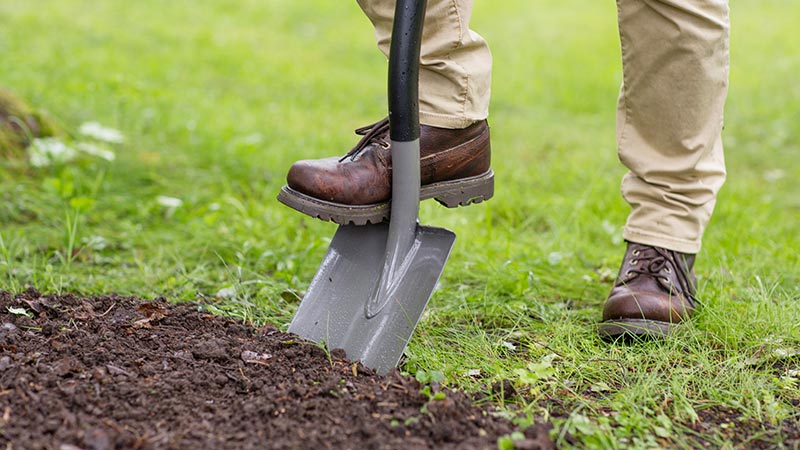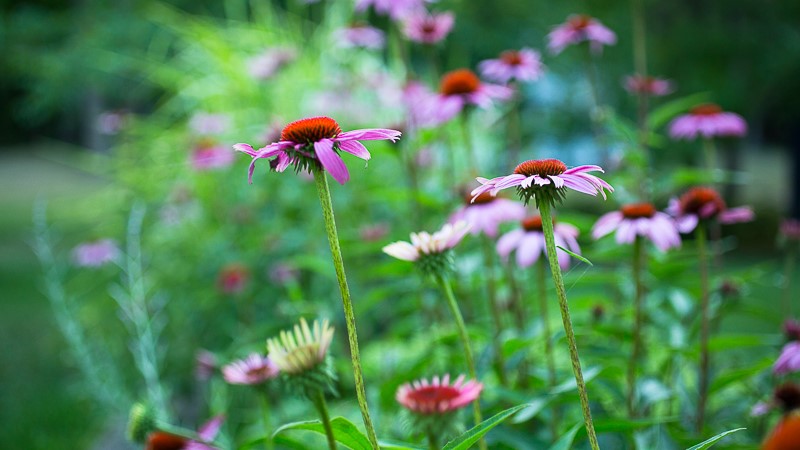How To Hand Till Yard To Make Garden Plot
By Emily Murphy
When creating a space for a new flower bed or veggie garden, it's important to first prepare the soil. This is especially true if you're working with compacted or clay soil. Tilling and adding compost give you a head start to a better growing season.
When to Till a Garden
It's best to till a new garden in the spring when soil is dry and weather is becoming warm. For some, this may be as early as March, while others may have to wait until May or early June depending on the region and climate. Tilling wet soil damages the valuable, existing structure which you'll need as your garden grows. Insert a trowel into the soil to determine when it is dry. If it's difficult to insert and the soil feels dry to the touch, it's ready.

How to Till a Garden
Follow these 11 steps to best till your garden:
-
- It's best to prepare your spring garden in the fall and sheet mulch before rains set in.
To sheet mulch, first determine where your new garden will grow, remove any large weeds or shrubby plants, and wet soil using Gilmour's Heavy Duty Front Control Watering Nozzle and Flexogen Super Duty Hose.
-
- Next, place a layer of cardboard over the soil surface.
The cardboard is a natural weed barrier and a source of carbon.
-
- Top the cardboard with one to two inches of weed-and-seed-free grass clippings and organic compost.
Then add a 1- to 2-inch layer of mulch over the compost, using leaves, bark, or another organic mulch.
-
- Again, wet the newly sheet mulched area using your watering nozzle and hose.
- Let nature do its work through fall and winter until spring.
- When weather warms and the soil is dry, double-dig your new garden area.
This is much easier to do after a season of sheet mulching. To double-dig, dig a 12-inch-wide trench with a spade that reaches to the depth of the spade (about 8 inches). Dig the trench from one end of your new garden to the other end, placing the soil from the trench on a nearby tarp or in a wheelbarrow.
-
- Use a garden fork to loosen the soil at the bottom of the trench.
Once loosened, but not turned, sprinkle a 2-inch layer of compost into the trench and gently work it into the soil.
-
- Next, dig another, separate trench directly adjacent to the first trench.
Again, dig this trench so it runs the full length of the new garden. As you dig, place the soil from this second trench into the opening of the first trench. It's best to avoid mixing the soil when moving it from one trench to the other, so let it slide off your spade rather than turning it. This will help maintain beneficial soil structure.
-
- Work the base of the trench with a garden fork and spread a 2-inch layer of compost.
- Repeat steps 8 and 9 until you've covered the entire area of the new garden.
- Fill the final trench with the soil from the very first trench (the soil placed on a tarp or in a wheelbarrow).
Before planting, spread a final 2-inch layer of compost over the entire bed.

Benefits of Tilling Garden Soil
When you sheet mulch in fall and double-dig in spring, it prepares a planting area that is ready to grow a fabulous garden while working with nature. Soil is habitat for microbes and animals like worms that do much of the work of maintaining healthy soil. When we double-dig instead of using a machine like a rototiller, we till in such a way that is least destructive to soil health while adding aeration and organic matter.
Garden Tilling FAQ's
How deep do I till a garden?
Double-digging adds aeration and organic matter to soil as deep as 18 inches. This is twice as deep as a typical rototiller, giving plants and their root systems the very best start.
How do I prepare garden soil?
Remember to first prepare garden soil with sheet mulching, this will make the work of double-digging in spring far easier. It also adds organic matter and helps manage weeds in advance. Sheet mulching is also a great method for converting lawn into a garden. Simply place your sheet mulching layers over the grass.
How do I turn soil?
It's best to not turn soil often. Most soils develop over years, forming layers that are home to a variety of animals needed to grow healthy gardens. When we move soil in the double-digging approach to tilling, we add aeration and organic matter while disturbing natural soil ecology as little as possible.
How To Hand Till Yard To Make Garden Plot
Source: https://gilmour.com/tilling-garden-soil
Posted by: davidsonofeautioull.blogspot.com

0 Response to "How To Hand Till Yard To Make Garden Plot"
Post a Comment